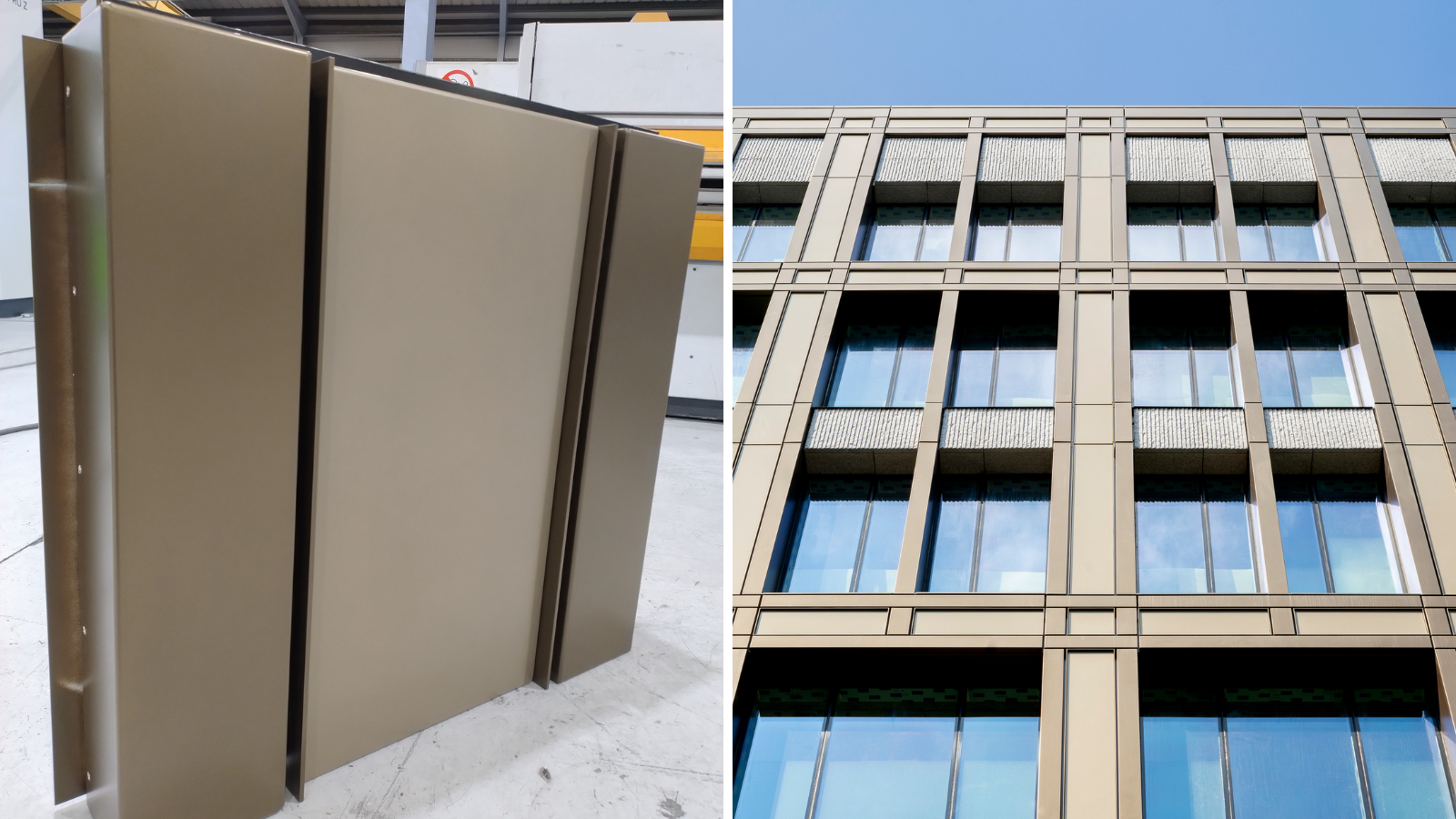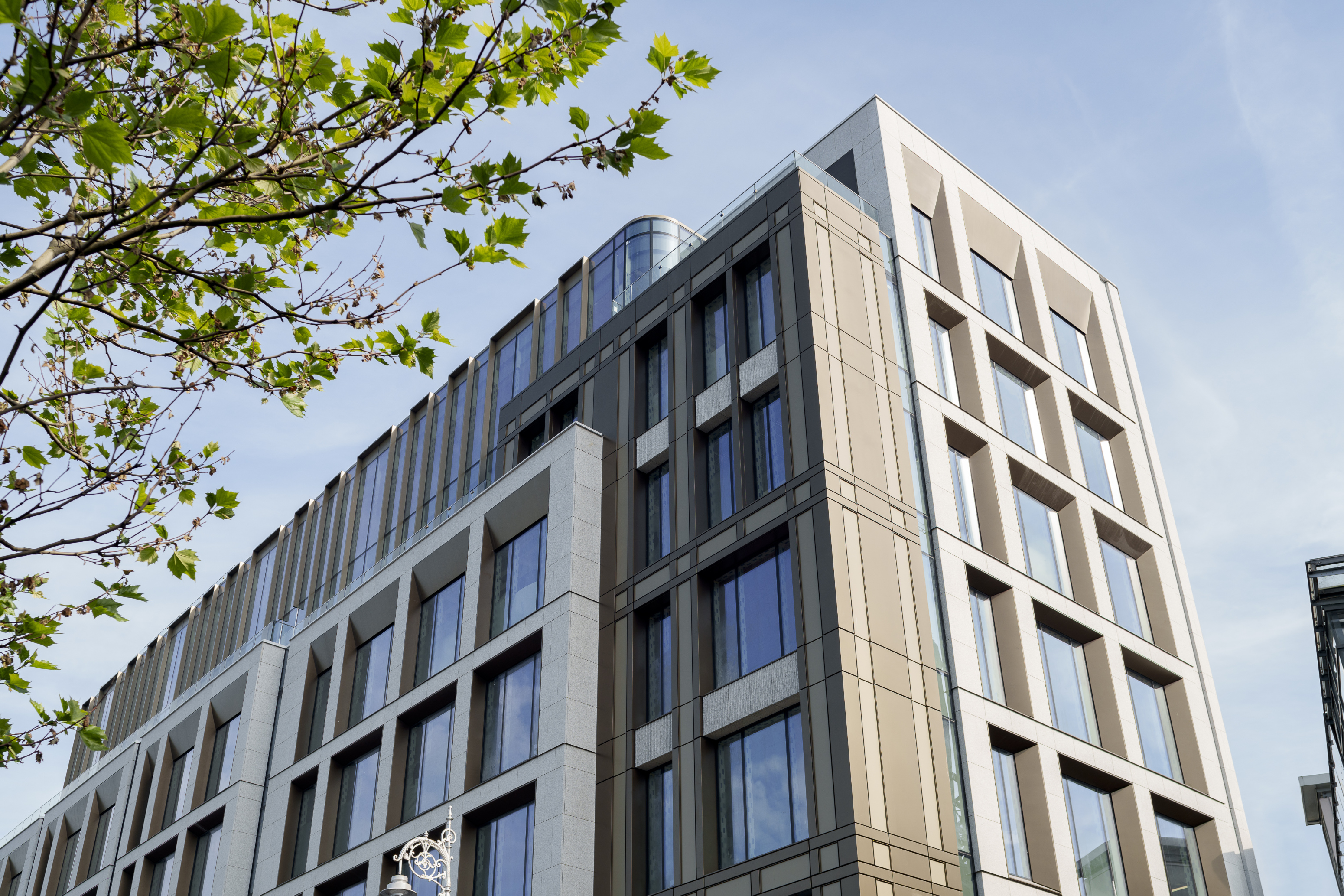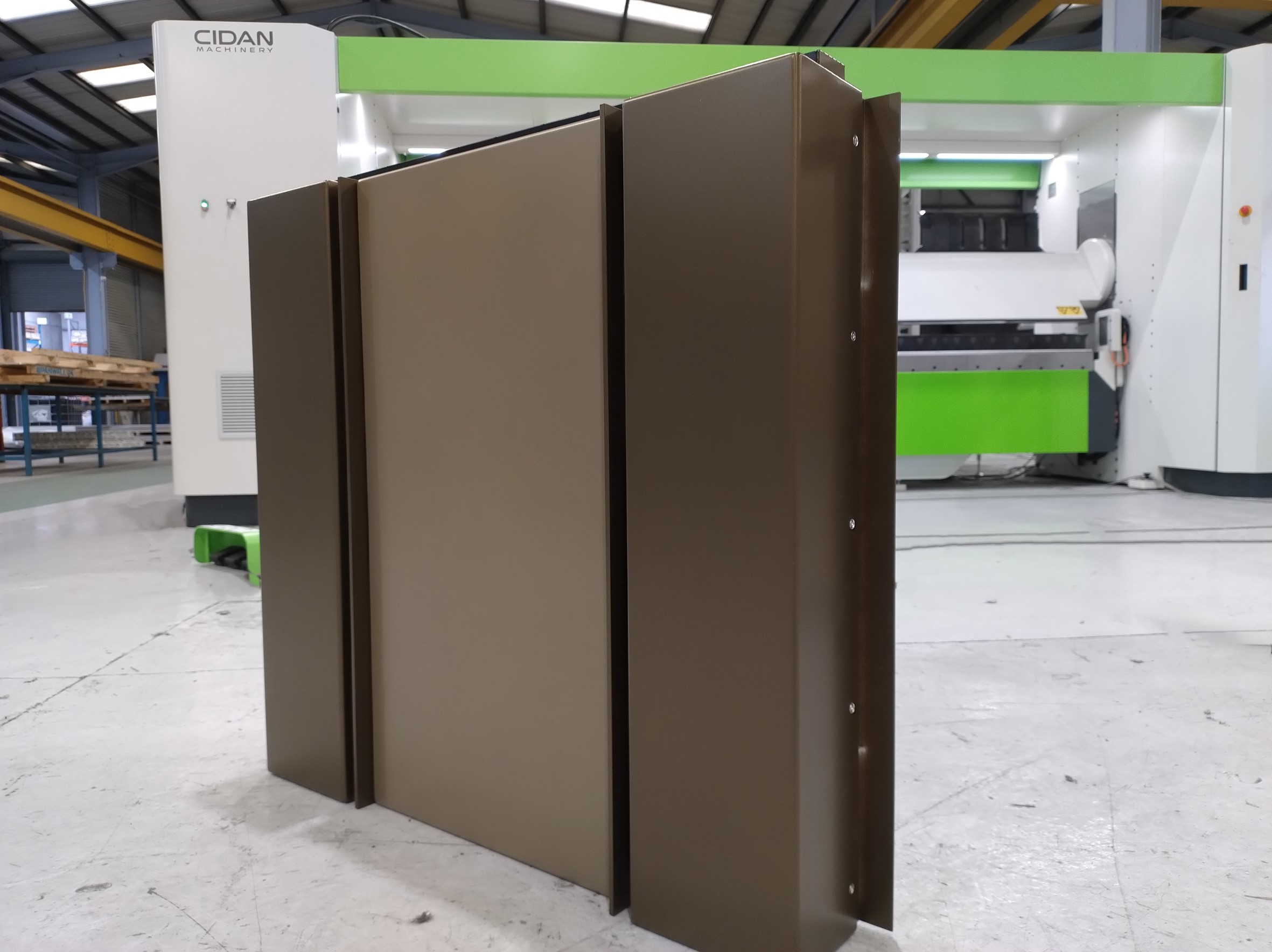6-Jan-2025

Gabe McArdle, Head of Commercial at Spanwall Façades, looks at a ground-breaking bespoke façade project in Dublin and how MMC principles and digital technology have brought significant benefits to the redevelopment of a landmark commercial building.
In real estate development, the importance of construction efficiency cannot be overstated and particularly in a city such as Dublin where commercial space is at a premium.
The recent redevelopment of a prominent office building overlooking the River Liffey – Fifteen George’s Quay – by IPUT Real Estate demonstrates how advanced digital design and offsite assembly of rainscreen cladding can significantly minimise work on site whilst delivering exceptional quality and design integrity.
An existing office building was expanded to over 70,000sqft with the addition of two new upper floors, a new landscaped roof garden and terraces, and a riverfront café. It now offers seven floors of high quality, highly sustainable office space in a prime riverside location.
As part of the redevelopment, the entire façade was replaced and a bespoke metal rainscreen solution was developed and engineered by Spanwall in close collaboration with specialist façade contractor, Alucraft to deliver the architects’ contemporary vision and aesthetic for the building.
The rainscreen façade design and specification had to provide long-term durability, weather performance, low maintenance and visual impact.
The new envelope successfully blends stone, metalwork and floor-to-ceiling glazing with panoramic views.
Spanwall’s aluminium cladding was polyester powder coated in two shades of bronze and was used to striking effect in vertical and horizontal rectilinear configurations which complement the stonework.


The Drivers for Offsite Assembly
The construction methodology for the rainscreen system was to use offsite pre-assembly to maximise work in the controlled environment of Spanwall’s factory, before transporting pre-assembled multi-element panels to site for faster installation.
The George’s Quay site had restricted access for deliveries and was highly constrained with very little space for material offloading and storage. This required a rethink of traditional cladding installation.
Spanwall’s rainscreen package for this prominent building involved the manufacture and assembly of over 6,000 components, and the CNC routing of over 10,000m of metal profiling.
By applying digital workflows and offsite processes to the project, Spanwall was able to fabricate 230 large, sub-assembled rainscreen panels, radically reducing the site installation phase for Alucraft.
This solution and the streamlined process allowed for meticulous quality control in the factory and a level of accuracy that can be very difficult to achieve on site. Each panel could then be installed seamlessly in the exact sequence – minimising material waste, storage, product damage on site, reducing vehicle movements, and maximising speed and construction efficiency.
To address the restricted site access for deliveries, Spanwall and Alucraft used a just-in-time approach to achieve a highly efficient delivery and installation programme. This required stringent logistical planning, scheduling and collaboration at every stage.
The Impact of Digital Technology on Project Outcomes
Spanwall has invested heavily in digital design and smart manufacturing, which allowed the creation of digital twins for each component on this project. The Spanwall team could then design and verify the large number of components for pre-assembly into rainscreen panel sub-assemblies. This streamlined the installation phase and maximised efficiency on site.
The digital technology also allowed product design validation before proceeding into manufacture, further increasing quality and accuracy.

Online simulations of the metal folding process were carried out as part of the validation process and all connection points were pre-configured. This ensured that the final assembly in the factory was accurate, seamless and efficient and avoided any issues with the on-site installation of the cladding sub-assemblies.
As well as reducing the installation phase and work on site, this application of offsite manufacturing to rainscreen cladding, helped to create a watertight building envelope in a much shorter timeframe.
The Importance of Early Engagement and Collaboration
On this project Spanwall and Alucraft have demonstrated how close collaboration and partnership working can enhance efficiency – in both manufacturing and on site.
Weekly meetings were held to develop and monitor the careful sequencing of design, manufacture and installation of the metal rainscreen sub-assemblies and to ensure just-in-time site deliveries adhered closely to the project timelines required by main contractor, Structure Tone.
The installation scheduling also had to account for the size and weight of the metal façade panels. This required a project-specific lifting strategy and a high degree of precision to achieve accurate alignment across the building envelope.
According to David Clark, Managing Director of Spanwall, “Alucraft and the Spanwall team collaborated really effectively from the earliest design stage to ensure the finished rainscreen façade was constructed to the highest standards in both form and function. The envelope blends in successfully with the surrounding architecture and has created a stunning addition to Dublin’s South Quay.”
“We have continued to invest in digital technology and this project is a great example of how we can produce a large number of dimensionally accurate metal rainscreen panels and finishes for rapid installation.”


Ronnie Mills, Managing Director of Alucraft, said, “The partnership with Spanwall on this project allowed close collaboration, in both design and manufacturing, and this proved hugely beneficial to the project. Being able to utilise the sheet metal production capabilities and knowledge from Spanwall’s team, with the expertise of our specialist façade team ensured that we had a streamlined the design-to-manufacturing workflow throughout the process.”
“The bespoke rainscreen solution used Spanwall’s offsite manufacturing and assembly capabilities, ensuring that the sub-assembled rainscreen units could be delivered to site on a just-in-time basis. This allowed our site installation teams to better manage the logistical constraints of the site and fast track the façade installation. This reduced time and cost.”
“We are delighted to have delivered another stunning façade, with the help of our long-standing supply chain partner, Spanwall.”
The metal rainscreen solution for Fifteen George’s Quay demonstrates how offsite assembly can contribute to a more sustainable built environment – from less material waste and fewer vehicle movements to site, to earlier project completion.
This scheme has also exemplified the advantages of developing a bespoke envelope solution that combines both strong aesthetic appeal and functional performance. The specification was for a metal rainscreen system that offered long-term durability and low maintenance properties in a waterside location, whilst ensuring the façade harmonises with the surrounding architecture. This has been successfully achieved.
The Project Team
Developer: IPUT Real Estate
Main contractor: Structure Tone
Architects: Burke-Kennedy Doyle
Consultants: Arup
Façade contractor: Alucraft
